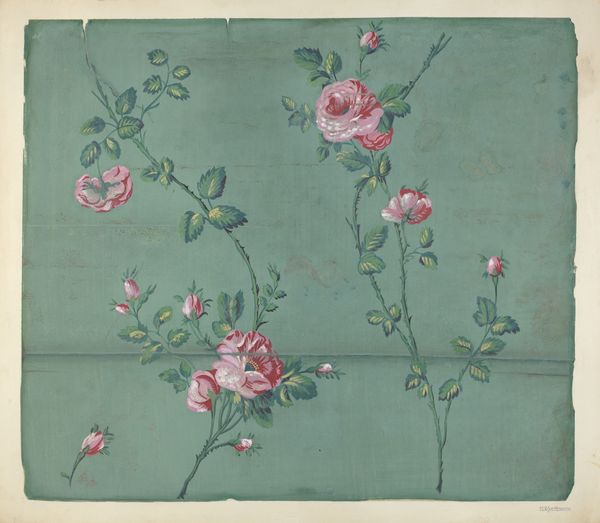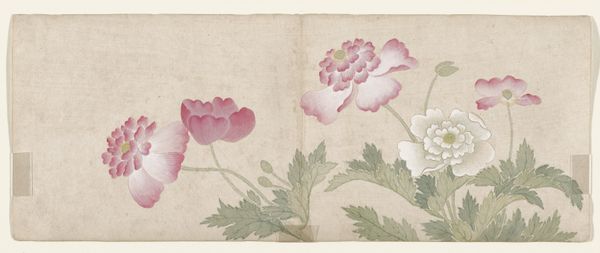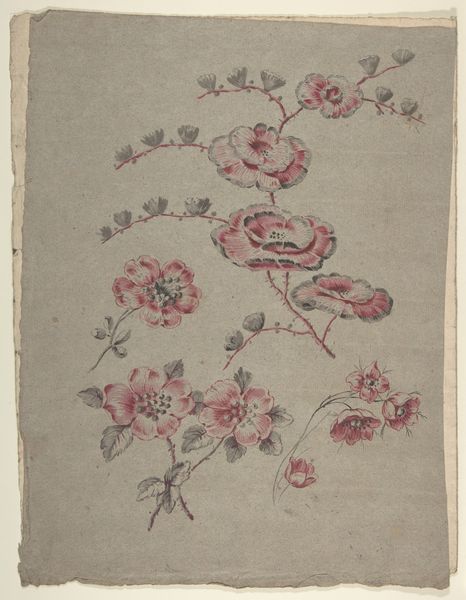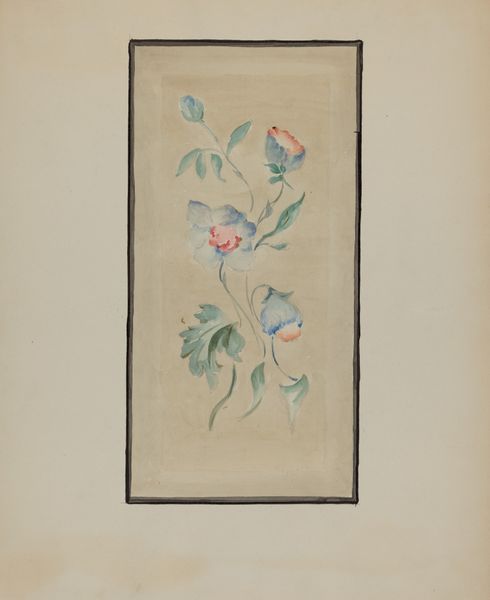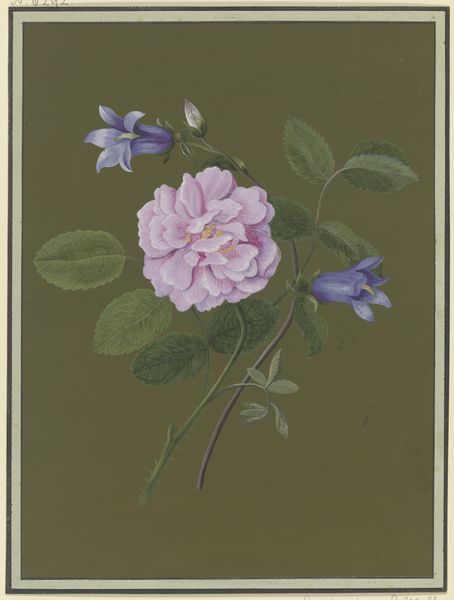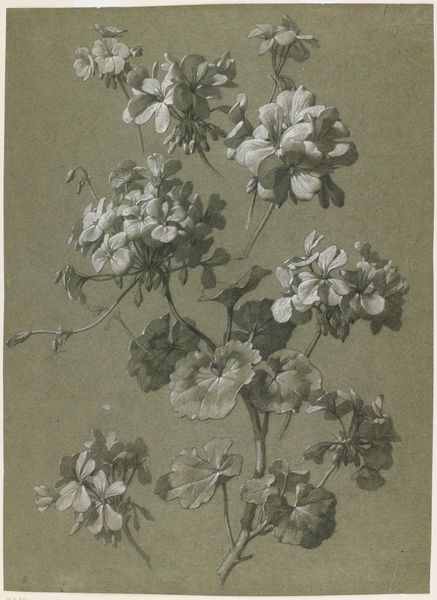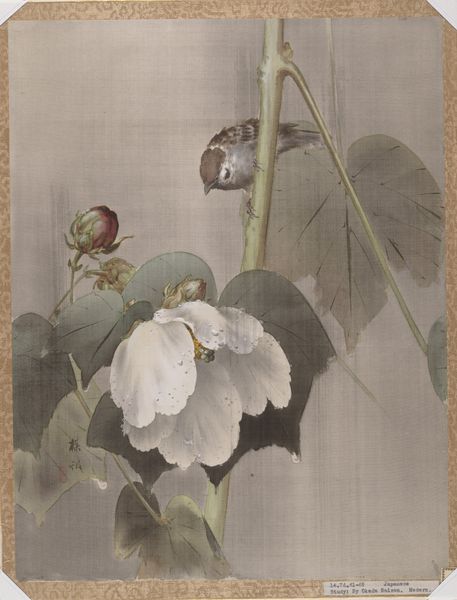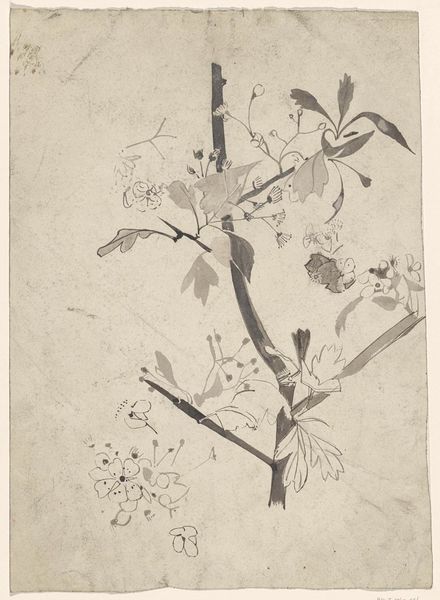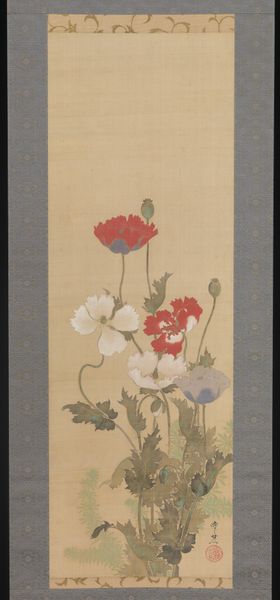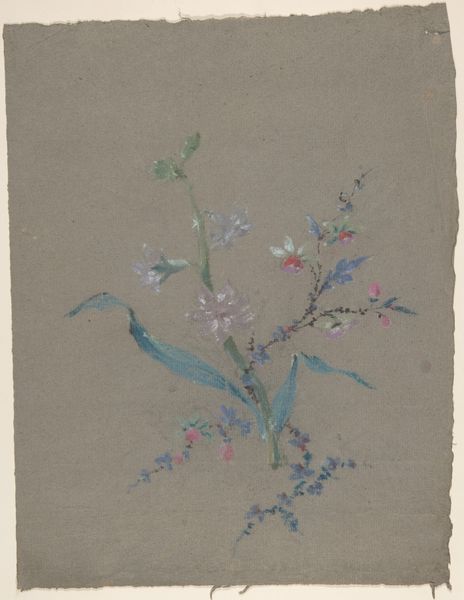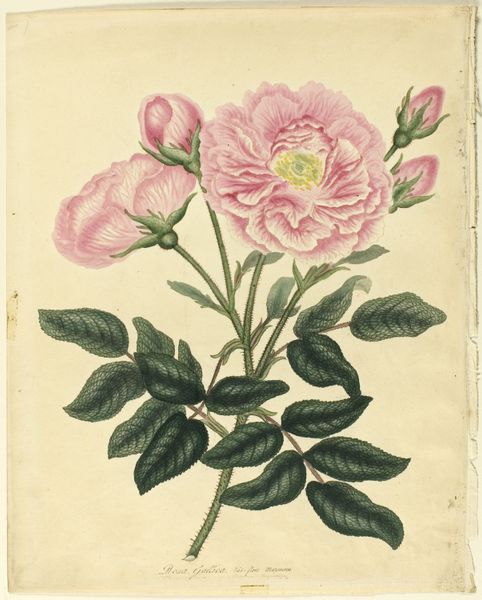
drawing, print, plein-air, watercolor
#
drawing
#
water colours
# print
#
plein-air
#
landscape
#
watercolor
#
realism
Dimensions: 10 1/8 x 14 3/4 in. (25.7 x 37.5 cm)
Copyright: Public Domain
Editor: Here we have Adolf Senff’s “Study of Hibiscus Plants,” created around 1828, using watercolor and print. What immediately strikes me is how delicate it feels, but also somehow unfinished with the ghosted outline of one flower stem. How do you interpret this work, particularly considering its symbolism? Curator: This piece speaks volumes about the period's fascination with natural history, wouldn’t you agree? The hibiscus itself often represents delicate beauty and fleeting moments, whilst white blossoms also suggest purity. Note Senff's choice of medium - watercolor, quick to apply - implying the intention of immediacy in capturing the specimens in front of him. That ghosted stem raises an intriguing question: Why did he leave it incomplete? Perhaps indicating an interest in not just capturing beauty, but the scientific study that also includes lifecycle phases, new growth. It invites the viewer to consider how these symbols tie to memory and how Senff views that intersection of beauty and scientific precision. Editor: That’s a great point about the lifecycle. It makes the "unfinished" element feel more deliberate. I had thought maybe he just ran out of time or patience. Curator: Time certainly could have been a factor; yet the delicate beauty suggests more layers of symbolic depth. Were you familiar with Senff’s botanical work beforehand? The interplay of symbolic depiction and scientific approach also gives the study depth. Consider how such images contribute to shared knowledge. Editor: No, this is actually my first time seeing his work, and it has really broadened my appreciation for botanical art. It's so much more than just pretty pictures. Curator: Precisely. These works acted as a form of visual record, shaped scientific understanding and popular cultural perception. Senff encourages us to find a point where memory intersects with visual understanding and representation. Editor: I see that now. Thanks for shedding light on these hidden meanings; I’ll definitely view similar pieces with a more informed perspective. Curator: Indeed, the emotional and intellectual layering shows us a unique insight, revealing our lasting relationship with natural imagery and visual culture!
Comments
No comments
Be the first to comment and join the conversation on the ultimate creative platform.
